|
July, 2005
Aug. 2005
Sept. 2005
Oct. 2005
Nov. 2005
Dec. 2005
Jan. 2006
Feb. 2006
Mar. 2006
Apr. 2006
May 2006
June 2006
July 2006
August 2006
September 2006
October 2006
November 2006
December 2006
January 2007
February 2007
March 2007
April 2007
May 2007
June 2007
July 2007
August 2007
September 2007
October 2007
November 2007
December 2007
February 2008
March 2008
April 2008
May 2008
June 2008
July 2008
August 2008
September 2008
October 2008
November 2008
December 2008
February 2009
March 2009
April 2009
May 2009
July 2009
August 2009
September 2009
November 2009
December 2009
January 2010
February 2010
March 2010
ČERVENÁ BARVA PRESS NEWSLETTER
Gloria Mindock, Editor Issue No. 54 April, 2010
INDEX
Welcome to the April, 2010 Newsletter!
This month Červená Barva Press celebrates 5 years!!!!
In honor of our anniversary, there are 2 important readings to celebrate this very special occasion.
Červená Barva Press Reading Series
Pierre Menard Gallery
10 Arrow Street/Harvard Square
Cambridge, MA
April 7th, 7:00PM
Readers:
William James Austin (special guest)
Judy Katz Levine
Mark Pawlak
Červená Barva Press will be launching Mark Pawlak's new book, Jefferson's New Image Salon
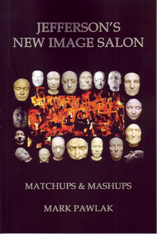
When will we pass Raphael’s Silver Cloud Lounge and Goya Cosmetics? Do we have time for a
quick stop at Unicorn Hair & Nails? Do you ever wonder what’s on the menu at the Café Magritte?
Have you put in your holiday order with the butcher at Bosch’s Meat Market? Do you secretly want
to sneak into Grendel’s Den or buy the latest discount item from Golem Sales? This is America,
and, as Mark Pawlak makes amply evident, it just keeps getting stranger and stranger. If you are
trying to get to Vampire Manor or need the phone number of Sasquatch Taxidermy, this is the
only accurate guidebook available today.
—John Yau
In Jefferson’s New Image Salon, Mark Pawlak transforms a one-trick pony into a circus of
surprising yokings, which on further inspection turn out to be not only surreal—Shylock’s Hair
Designs, Onan Gasoline Engines—but poetic and real. The preposterous, often hilarious names
of American businesses Pawlak found in doing his mixing and matching make Edsel seem a great
name for an automobile.
—Charles North, author of Complete Lineups
April 21st, 7:00PM (Cervena Barva Press Authors)
Readers:
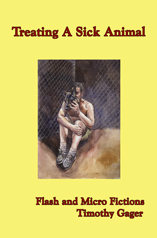
Timothy Gager |
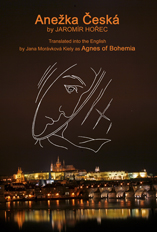
Jana Moravkova Kiely
(Translator) |
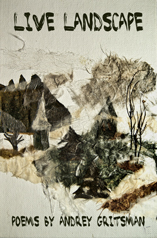
Andrey Gritsman
(Forthcoming) |
Červená Barva Press will be launching Andrey Gritsman's new book, Live Landscape.
Available April 21st
April is also the month we raise funds for the press.
We need your donations more than ever! Please donate something to us!
Since 2006, we have published 41 chapbooks, 19 full-lengths and 5 e-books. As you can tell, we are an active press publishing writers.
We work very hard and really need some support.
Even ordering a chapbook or two, helps. We are grateful for anything that you can contribute! So get out that checkbook and donate.
Send to:
Cervena Barva Press
P.O. Box 440357
West Somerville, MA
02144-3222
This year we will be publishing 12 chapbooks and a zillion full-lengths!
The winners of the poetry and fiction chapbook contests are announced. Everyone will be notified by e-mail this week-end and then
I will announce the winners officially.
My new book, Nothing Divine Here, has been released. Check it out.
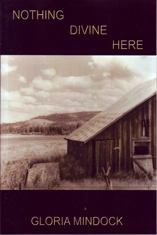
Passionate and rebellious, Gloria Mindock’s poetry jumps forcefully from the page, grabs the reader
by the collar of his coat and holds and hangs on to his/her attention.
In unison with the poet’s heart, the nature of things is in big turmoil here, forever searching for the
elusive Divine Harmony, the only force capable of rearranging the world into one of love and understanding.
In a perpetual state of sadness and grief, these poems descend to the very core of the raw discourse
of the soul, devoid of artifice and pose. The stark simplicity of their statement disarms us and leaves
us vulnerable in front of the bitter reality of life.
-Flavia Cosma, author of seventeen books of poetry, a novel, a travel memoir, and
four books for children
In Nothing Divine Here, Mindock invokes a resurrection, the power of love to spring eternal from
the hurt we all know. She looks at the personal and the political, that haunting polarity, and weaves
a gentle but brave hopefulness between them.
-Afaa Michael Weaver, Simmons College
Gloria Mindock is a fearless poet. She gets right in the face, in the very nostril of death. She
confronts her past lovers, her dreams, dashed or otherwise, not with cool detachment, but with a
visceral lyrical and emotional engagement. She has made her pain into high art, into the high holy.
Mindock, is a force to be reckoned with, so watch your back!
-Doug Holder, Arts Editor The Somerville News, Founder Ibbetson Street Press
My book has had 3 favorable/great reviews so far by Hugh Fox, Michael T. Steffen and Irene Koronas.
To order by mail: $15.00 plus $3.00 S/H
Total: $18.00
www.thelostbookshelf.com
or by mail to:
Gloria Mindock
PO box 440357
W. Somerville, MA 02144-3222

Quale Press is pleased to announce the publication of
(nevertheless enjoyment, prose poems by Elizabeth Bryant.
Elizabeth Bryant was born in Bay Ridge, Brooklyn. She is the author of three chapbooks, most recently Fluorescence Buzz
(Dusie Press, 2009). Her forthcoming books include No Subject (Dusie Kollektiv, 2010) and Reality Visits the Land of Illusions
(Black Radish Books, 2010). She co-curates the Bard Roving Reading series, and intermittently publishes an experimental project
known as Defeffable.
ISBN: 978-0-9792999-9-5
Perfect Bound, $13.00
Publication Date: March 1, 2010
5.5 x 7.75 inches, 74 pages
Prose Poetry/Poetry
Individuals: Order directly from Small Press Distribution,
1-800-869-7553.
Bookstores: Order through Small Press Distribution.
"Che. is language painted and profound in its charity…immense in its symbolic wave. The novella begins with the noise of
rain and ends with our undisguised tears. Clearly, Che. is only answerable with language-beyond, hooves across the landscapes
and desert time. A provident novella it is finally a symbol for the gaze of resilience. The precision of dreaming and the
psyche¹s print indulgent in reverie and magic."
-Colin Momeyer (from a review of Che.)
"brilliance…a lovely thing…sophistication and ironic humor"
-City Lights
To order: http://www.spdbooks.org/Producte/9781935402862/che-a-novella-in-three-parts.aspx?rf=1


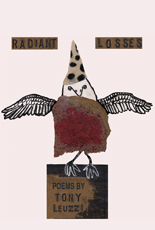
RADIANT LOSSES
New Sins Press, 2010
$13.00 + 3.00 S&H
Order at: newsinspress.com
You have a new book coming out, Radiant Losses, which my press New Sins was fortunate enough to grab hold of early on.
Before we begin to talk about the middle section, the Fibonacci poems, can you tell me what you believe may have struck our
editors about this manuscript?
This is an interesting question, Glenn. On the one hand, there is no way I can get into your heads and find out why all of you
at New Sins chose the book-that is unless you were to tell me why you chose it. On the other hand, this sort of speculation is a
lot of fun, and can be quite useful in considering my aesthetic against yours. Knowing only yours and Rane Arroyo's work, I would
say, obviously, there is a shared sensibility in our writing about gay themes. None of us are what I would call avant-garde writers,
though all of us appreciate the experimental tradition in the arts and poetry. (I know, for example, Rane is quite fond of Ashbery,
but one would be hard pressed to find Ashbery in Rane's work. Although I am hardly cutting edge, I am a big fan of poets like
Rae Armantrout and Joe Ceravolo-both distinctive voices in the experimental tradition.) With regards to Radiant Losses, I assume
the editors at New Sins enjoyed the archness of the poems, their odd blend of humor and earnestness. People have often told me
they can't tell when I'm joking or being serious, that there's an almost imperceptible line in my delivery between sincerity and
sarcasm. I suspect many of my poems share that ambiguity, which can be pleasing and occasionally maddening. From the perspective
of craft, I am certain that shape and form play an important role in how my poems "get made." Even in the freer verses, there is
always a sense that careful attention to lineation and rhythm are of utmost importance. The real trick is trying to write these
kinds of poems while maintaining a degree of spontaneity. I have not always succeeded in doing this, and some of my lesser poems
are a bit over-cooked. But to my way of thinking most of the poems in Radiant Losses do manage to be spontaneous and, for lack of
a better word, polished. The effect is one of effortless effort.
I have to admit that I have an aversion to neo-formalism. Your middle section, however, may or may not fit into that category.
Fibonacci is not a formalist poetic form in the sense of a sestina or a villanelle, for example. But what is it? And what attracted
you to it? (And explain its "form" for those who are unfamiliar with it, perhaps?)
Whether or not one identifies as a neo-formalist, matters of form are always important to writers of poems. I suppose one might ask
"formal to what degree?" But a better question is "formal in what sense?" The first poems I ever wrote were in the manner of Rae Armantrout:
terse, elliptical things that relied heavily on subtext to convey meaning. I liked braiding together found bits of language with strange
assertions and stranger imagery. I worked like a collage artist, building poems from disparate materials. The poems certainly didn't say
anything outright, and this was probably because I was a closeted teenager who feared asserting anything that might "give me away." At any
rate, my efforts were intellectually impressive (for a teenager) and abysmal as poetry. In college, I pursued form because I wanted to rely
on pre-existing rules: the less choices I had to make with regards to rhythm and lineation, the more I could, in the words of my teachers-most
of them residual New Critics-"find freedom." Taking Ezra Pound's advice, I wrote a sonnet a day for two or three years. Only four or five
were any good, but I didn't care. I was just pleased to be completing something. Throughout my twenties, I continued to write in form, tried
my hand at villanelles, sestinas, quatrains, blank verse, rhyme royals, etc…. Through repeated effort, I got pretty good at such things and
began to dream sonnets in my sleep. There is a certain thrill in submission and when writing those early formal poems I felt as if I were
flying. But writing in traditional forms can be a dead end, too. I didn't want to become Richard Wilbur-you know, dashing off pretty poems
in 2000 that sounded as if they might have been composed in 1910. I also realized that certain forms could only contain certain kinds of
expression. A sonnet, for instance, cannot handle more than one or two ideas. I wanted a bit of expansiveness, so I tried blank verse.
There were some minor triumphs there, but when I wanted to break free of it I discovered I was stuck. Rhymes were easy to drop those
iambic pentameter rhythms clogged my brain like kudzu. My first book, Tongue-Tied and Singing (2004), is filled with poems that began
as blank verse. In order to avoid sounding repetitive, I edited most of them heavily. For the new book, I wanted to be able to avoid
blank verse lines even in the early drafts. One way to do this was through syllabics. I was particularly fascinated by the possibilities
in Fibonacci poems, where the number of syllables in any given line of the poem was the total of the two lines before
it: 1, 1, 2, 3, 5, 8, 13, 21, etc… Most writers who have tried their hands at "Fibs" write five or six-line poems that
resemble haikus. I wanted to include a seventh line that was longer than a standard line of verse. That final sumptuous
line would provide a marked contrast to the staccato-like terseness of the short, early lines, as if a stutter finally broke
out in effusive utterance. I decided, too, that each Fib would have three stanzas. While I was writing them, I read a lot of Proust,
who is known for his dense, spiraling sentences. I imitated some of those sentences in the Fibs, and indeed many of them are made up
of one sentence cast across 21 lines. All of this sounds rather dry, but actually the process was thrilling. In one year I wrote 65 Fibs.
I discovered that the form could accommodate just about any kind of subject matter, which is reflected in the 40 or so I chose to include
in the new book.
I think all writers have a curiosity about how authors go from point A to point B in their careers; of course, in terms of
books--particularly poetry manuscripts--such a formula is often random (for example, my "first" book was my third, or so, and
my next book is my sixth, or so, in terms of the order in which they were written). So what am I asking exactly? Is Tongue-Tied
and Singing your first full-length collection and Radiant Losses your second collection, having been written in that order? If so,
what's the evolution of the writing? If not, does a poet's ultimate arc matter sequentially?
Well, I am pretty methodical. All the poems in Tongue-Tied were written first. I didn't begin Radiant Losses until 2005, a year
after Tongue-Tied was released. Some writers work on several books at once. I can't really manage this. I'm a little too obsessive,
I think. I can work on various sections of a book at one time, but all my energy is channeled into that one book. I'm not terribly
prolific, since I often work in fits and starts across any given year. I teach at a college where the load of courses is enormous,
so that prevents me from getting more writing done than I want. But the primary reason I am not always writing is because I am an
avid reader who will often put writing projects on the backburner in order to work through a good book-or ten. Ultimately, each of
us works in a way that is best for one's self. I admire-and envy-writers who can crank out a book a year and juggle three or four at
any given time. I lack that kind of temperament. I suppose it is not accidental that some of my favorite writers were not terribly prolific.
Stanley Kunitz, Elizabeth Bishop, and Cavafy were all early influences. But then, so were Yannis Ritsos and Frank O'Hara-and they
wrote voluminously. So who knows?
I don't fret too much over the composition process, but I do very much fret over the revision/editing process. How are those processes
for you? Is one or the other problematic, or perhaps conditional?
I don't really separate the two processes. Very rarely does a poem simply come to me and that's that. (When such poems do they are
usually inspired and among my best.) The bulk of my poems are continuously subjected to a rigorous editing process. When I say rigorous,
I do not mean systematic. To begin, I generate a "new" line or grouping of lines, then often hack at it, move the words around on the page.
I don't know if what I do at that point can be called "real" writing in the sense that people think of composition. I suppose I become
an arranger of words. One part of my brain dreams up the raw materials and then another part of my brain begins to redistribute the
materials, reshape them, cut them, add to them…. I won't stop until I'm satisfied. I am currently working on a group of prose poems.
One of them in particular has been through more drafts than I can count and I simply will not let it go out into the world until
I'm happy with it. This poem has been "going on" for months. Occasionally, I move it to the trash on my laptop, only to retrieve it
a few days later and begin reshaping it with a renewed sense of purpose. Several times I thought I "got it," although that feeling did
not last and the poem continues to trouble me. Meanwhile, other ones from the same serious have arrived far more quickly-but all of
them have been edited and reedited over and over. I am also, as you know, quite open to suggestions from others. I'll do anything I
can to improve a poem, including detonate it if I have to.
As you probably already know, New Sins frets over its cover art. Now, you had an artist friend, Kathleen Farrell, design your cover.
Can you explain how you believe that work ties into, fits with and/or otherwise unifies your vision of this manuscript?
Kathleen and I are soul mates. I met her when I was 18 and she was 28. We were working in a record store (yes, they still sold records
alongside the "new" compact discs) and instantly got on. We both loved jazz and would scare everyone out of the establishment by blaring
the likes of Cecil Taylor and Alan Holdsworth. When I first began teaching at Monroe Community College, where I still work, I looked up
Kathleen, who was and is working there as well. From that point on, we became great friends. But more importantly, we share a kind of
sympathy. I understand her work and she understands mine. She is a very literate artist and I am a writer who likes to create visual art.
We both came from lower-middle-class families and lost our fathers early in our lives. We're both scrappy, too. Empathic and giving, yes,
but don't toy with us. Anyway, she has designed covers for my chapbooks and Tongue-Tied as well. She has also designed posters for me
whenever I need one for an upcoming reading. She is extremely generous with her time and her talent and sees every commission (I pay her
in flattery and occasional dinners) as a challenge. I knew I wanted the bird for the cover of Radiant Losses. I first saw it in a show
she gave six months earlier and immediately reacted to it. I remember thinking it was quirky, weird, magnificent, bold-everything I want
Radiant Losses to be. There is a kind of primitive sophistication in that bird glaring out at you. It suggests some Inuit line art,
which I love, but also echoes the jazz-like spontaneity of some of the Fib poems in the book. I hope I manage to write fifteen more
books before I die and I hope Kathleen can do the cover art for all of them!
Your blurbists. Let's talk about them. Darling Vulgarity by Michael Waters is a poetry book that I wish I had written.
Since I didn't, I can only wish I had found that cover art before he did. Also, Kevin Killian says very kind words about
your work as well, which I find interesting. If one's aesthetic is like Time's Arrow, my work is heading always toward the work
of one of my major mentors, Charles Henri Ford (at least in my opinion). However, because I am also a scholar, I am more usually
linked with the brilliant Thomas McGrath (though I don't, myself, see a thick thread of a connection, at least not yet aesthetically).
What is your connection to these two authors who blurbed you and the works they, themselves, produce? Are they "simply" teachers,
while your muses flirt elsewhere? Or do all contemporary artists work with, and through, the fractals of all we are exposed to
linguistically?
I know Kevin and Michael well and have a great deal of respect for each of them and their work, however, my connection to each is
quite different. In my early twenties, Kevin Killian's novels were among the first gay books I read. I think I jumped from Edmund
White to Killian in one fell swoop. Shy was a revelation: smart, sexy, edgy, experimental, and yet accessible. One critic has said
of his work that he represents a "kinder, gentler avant-garde." That's probably true. I don't write much fiction, but the stories I
have written are very much influenced by his style. In my mid-twenties, Brad Pease and I started up a little queer magazine called
Gerbil. I knew I wanted Kevin to contribute. This was back in the mid-nineties before Internet access was in every home in America,
so I called San Francisco Information and got his home phone. His wife Dodie answered and gave me his work number. I called him, said
"Mr. Killian, I love your books, please write something for Gerbil." We had no track record to speak of, yet he obliged and sent us
top-grade work. (Incidentally, that story, "Hot Lights," later got anthologized in an edition of Best Gay American Fiction.) Because
we got Kevin, Bob Gluck, also a great San Francisco-based writer, trusted us enough to contribute. Kevin also knew I liked a
now-deceased writer name Bo Huston. He and Bo co-wrote an unpublished story called "Angel"; that, too, went in Gerbil.
In 1998, I made my first trip to San Francisco to collaborate with Kevin on a story. The little, unpretentious thing we made is
called "Rochester"-where the two characters, Tony Leuzzi and Kevin Killian, are bizarro-world versions of ourselves. "Tony Leuzzi" is
a silly club kid from San Francisco who flies out to some god-forsaken place called Rochester to work with "Kevin Killian," a lecherous
slob who has his monkey, Chester, write all his novels. We had so much fun writing that story in his small apartment on Minna Street.
I remember we took turns at his computer, laughing our asses off the entire time. "Rochester" was first published in Shiny, a
semi-experimental journal based somewhere in Colorado. When Kevin was putting together Impossible Princess, his most recent collection of
stories, an editor at Chronicle Books insisted that it go in there, too. Incredibly, "Rochester" has played a prominent part in almost
every review of the book. Who knew? We were only having a laugh! If the story has any merit, all the credit must go to Kevin, who is
truly a wizard at bringing out the best in his collaborators. He sensed early on in our joint effort that I have a ribald sense of humor
and drew that out of me.
Kevin's poems have moved me as well. I am particularly taken by his Argento Series, which chronicles his experiences of loss and confusion
during the AIDS crisis through the filter of Dario Argento's films. It's a moving, deeply felt book that gives me chills. In comparison,
my work is quite conventional. His blurb on the back of the book is honest but I don't think he would have read my poems had he not known
me in advance.
I met Michael Waters a few years ago through his editors at BOA, who urged me to connect with him. They rightly understood that he and
I were of the same ilk in terms of our intellect and mutual commitment to form. So I read all of his work, then interviewed him. He was
impressed with my diligence and suggested I try my hand at syllabics. He also inspired me to address the erotic more directly in my work.
When New Sins took my manuscript, he was the first person I called to share the news. Is he a teacher? Certainly. I have never taken a
class with him and he's never edited my work. But he possesses deep wisdom and from him I have learned a great deal. I agree that
Darling Vulgarity is a magnificent book. The syllabic poems in there, such as the title poem and the lead piece called "Black Olives,"
are among the best of their kind. He is very well respected in literary circles but deserves even more recognition than he has.
If you were to assess your achievements as a poet, what would you say?
When I met Louise Glück back in 2003 I asked her if she enjoyed teaching Creative Writing workshops. She said "no" because most
of her students have "ambitions beyond their natural gifts." Well, that was certainly a bitchy thing to say, but she was, of course,
correct. Thankfully, I have few pretentions for myself as a writer. I suppose I am, at best, a minor poet who writes some good poems.
(I have also written lousy ones that were unfortunately picked up by editors and are therefore out there on the Internet. I wish such
poems would self-destruct but they're there to stay, for now.) I don't belong to any "school," and save one writing workshop at the
graduate level, I am self-taught. I came to literature first as a reader and am probably a better reader of it than I will ever be a
writer. That said, creating things-and for me this means mostly poems-is an essential part of who I am. Although I love to give
readings and am not a shrinking violet, I enjoy positioning myself on the periphery of the poetry world. I plan on making as much as
I can out Radiant Losses, but that means I plan on marketing it for what it is-an odd, charming little book that was lovingly edited
by you and Rane. The prose poems I'm working on now are strange and fun. Each poem is named after a specific jazz standard and somewhere
in every poem-each one a block of prose-an allusion to a part of the original song lyric surfaces, albeit briefly. I'm having a ball
with them, and that's enough for me. Recently, a poet friend I've known for about 20 years told me he wants to write a poem on the
scale of Whitman's "Song of Myself," that he has the desire to say something important, something grand. I have never had such ambitions
and wouldn't know how to go about achieving them if I did. I work best in miniature and approach every poem intuitively. I don't set out
to write an "important" poem, nor do I imagine my poems will be read beyond my lifetime. I write because I enjoy it, and hope to entertain,
maybe even wow a few people along the way.


If you would like to be added to my monthly e-mail newsletter, which gives information on readings,
book signings, contests, workshops, and other related topics...
To subscribe to the newsletter send an email to:
newsletter@cervenabarvapress.com
with "newsletter" or "subscribe" in the subject line.
To unsubscribe from the newsletter send an email to:
unsubscribenewsletter@cervenabarvapress.com
with "unsubscribe" in the subject line.

Index |
Bookstore |
Submissions |
Newsletter |
Interviews |
Readings |
Workshops |
Fundraising |
Contact |
Links
Copyright © 2005-2010 ČERVENÁ BARVA PRESS - All
Rights Reserved
|

